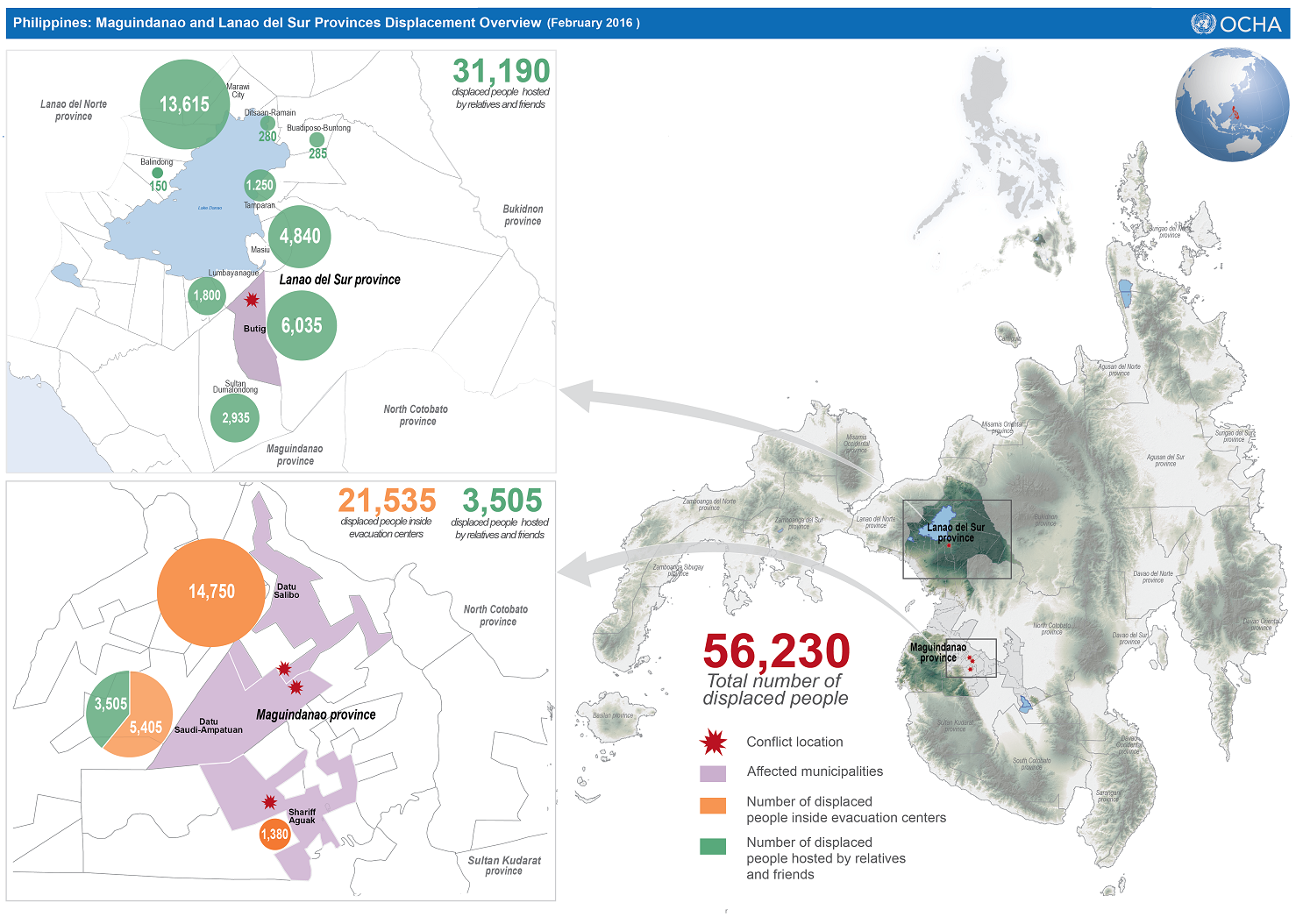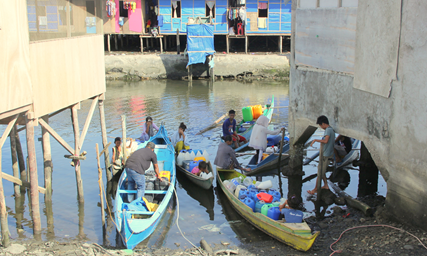
Drought hits Zamboanga IDPs
Water rationing tightened amid persisting drought in Zamboanga City
The Zamboanga City Water District tightened its water rationing schedule on 27 January due to an alarming drop in the water inflow at Tumaga river reservoir – the city’s main water source. Daily distribution of water has since been cut down to 8 hours from the previous 12 hours.
The citywide water shortage is also affecting about 16,100 internally displaced people (IDPs) who are staying in 12 transition sites across Zamboanga City. They have been waiting for permanent homes for almost two and half years since they were uprooted by the September 2013 fighting between government forces and a faction of the Moro National Liberation Front. In addition, an estimated 7,700 “home-based” IDPs are staying with relatives and friends or renting temporary homes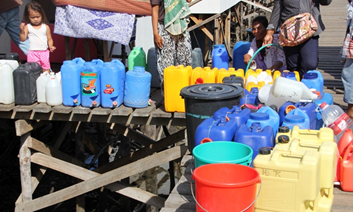
Water shortage takes a toll on the most vulnerable among the IDPs
Midzfar Pulalon lives in Mampang transition site – the largest IDP site located in the outskirts of Zamboanga City. Now 34 years old, he was disabled by polio at an early age. Midzfar used to live in Rio Hondo, a coastal area near the city centre where he sold cell phones for a living, until he lost both his home and income to the September 2013 fighting.
The city’s daily water rations do not cover the needs of over 7,600 IDPs in Mampang transition site. Even with his disability, Midzfar endured waiting in line for the delivery of water. However, with less water available at the site now, he has resorted to buying water from the host community. With the little money sent from his sister who works abroad, Midzfar pays PhP25 (US$.50) a day to buy 100 litres of water needed for his family. The price of water may rise as growing demand outstrips supply. He fears that he might not be able to afford water throughout the drought which is predicted to last until June.
The City Water District is mobilising four water trucks to supply water to all transition sites. It is planning to procure additional trucks but they are not likely to arrive before April. To address the gap, the Philippine Red Cross will provide additional water tanker truck to augment the city’s water distribution to the IDPs until May. Meanwhile, other humanitarian agencies on the ground including CFSI, FAO, ILO, IOM and UNHCR continue to support the authorities with providing camp management, protection, civil documentation, livelihood and community engagement assistance to the IDPs.
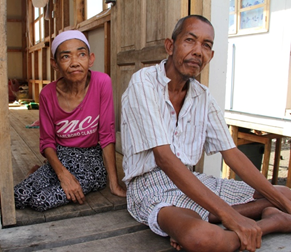
Impacts of El Niño on food security and health
While the prevailing El Niño has affected large areas of the Philippines, the most severe damage to agriculture is concentrated in Mindanao. About half of the total 194,000 hectares of affected farm areas are in Mindanao, 87 per cent of which have no chance of recovery.
In Zamboanga City alone, agricultural losses attributed to El Niño rose to almost PhP17.7 million ($373,000) as of 5 February, affecting over 900 farmers with 860 hectares of agricultural lands, the vast majority of which (780 hectares) have no chance of recovery, according to the Office of the City Agriculturist. As the drought persists, the City Agriculturalist predicts that up to 30 per cent or 3,500 hectares of the city’s rice fields may be lost in the coming months. To mitigate the situation, the authorities are providing affected farmers with a rice variety that can grow in saline or dry conditions and instructing them to adopt quick-turnaround planting of vegetables.
The City Health Office is concerned that water shortages may raise the risks of diarrhoea and other waterborne diseases among children and other vulnerable groups. From December 2015 to January 2016, six IDPs reportedly died, bringing up the total deaths among the IDPs since the September 2013 conflict to 293.
Alerted by the mounting impact of El Niño on food security and health of the IDPs, the city authorities will conduct a rapid nutrition survey in all transition sites to monitor and address malnutrition. They will also resume food distribution to all transition sites from March for 11 months, accompanied by provision of kitchen sets and cash assistance.
However, temporary assistance to address the immediate needs of the IDPs alone cannot provide durable solutions to their displacement. As of mid-February, just over 2,000 out of the planned 6,500 permanent housing units under the government’s Zamboanga Recovery, Reconstruction and Rehabilitation (Z3R) were completed. With an increasing delay in the Z3R implementation timeline, aid agencies fear that most of the remaining IDPs may be left in limbo into the third year of displacement.
As the drought worsens, IDPs may be exposed to greater food insecurity and health risks related to waterborne diseases.
"Life has been difficult here in the transition site because I no longer have a job. I hope to find a permanent home soon and restore my livelihood."
- Midzfar Pulalon, IDP
Renewed violence, renewed displacement
Armed clashes in central Mindanao displace over 56,000 people
Successive clashes between the Government forces and armed groups in Maguindanao province have displaced over 5,000 families (25,000 people) as of 25 February, according to the Office of Civil Defense (OCD) in the Autonomous Region in Muslim Mindanao (ARMM). Fighting began on 5 February in the municipality of Datu Salibo and spread to the neighbouring Datu Saudi Ampatuan and Sharif Aguak municipalities. The majority (4,300 families or 21,500 people) of the displaced people are staying in nine evacuation sites in these municipalities while the rest are staying with relatives and friends. Five civilians were wounded including a boy and a girl.
On 21 February, another round of firefights erupted between the military and an armed group in Butig municipality of Lanao del Sur province. Continuous fighting displaced an estimated 6,200 families (31,200 people) as of 29 February.
Local authorities at the regional, provincial and municipal levels provided food packs and established emergency health clinics for the displaced people in the two provinces. The Mindanao Humanitarian Team, comprised of UN agencies, Red Cross and international and local NGOs operating in the area, is liaising with the authorities to monitor the situation closely. ICRC issued a news release calling on all parties to the conflict to strictly abide by international humanitarian law. The security situation in the affected municipalities remains volatile and may prolong displacement.
Conflict-induced displacement more than doubles in Mindanao in 2015
Almost 407,400 people were cumulatively displaced in Mindanao in 2015, including some 37,000 who were repeatedly forced to flee their homes mostly because of armed conflict, clan wars and other forms of violence, a new report of UNHCR and the Philippines Protection Cluster revealed.
Conflict-related displacement increased by 127 per cent compared to 2014. This was largely driven by the Government’s joint military operations against the Bangsamoro Islamic Freedom Fighters which intensified from February to March 2015. At its peak more than 148,000 people were displaced in Maguindanao province alone. Central Mindanao including Maguindanao was home to the vast majority (over 80 per cent) of over 231,600 conflict-induced IDPs in 2015, followed by North Cotabato and Basilan provinces.
Natural hazards such as flooding and heavy rains displaced over 119,400 people, three quarters of whom in North Cotabato and Sultan Kudarat provinces which are adjacent to Maguindanao. The report highlighted that many people in central Mindanao who suffer annual flooding are also subject to frequent displacement due to conflict.
With persisting insecurity, long-term recovery and development assistance to help the returning IDPs has been limited. “To date, durable solutions for these displaced people continue to be a pressing concern especially in an environment where peace and order remains to be elusive”, the report concluded.Local authorities respond to displacement in Maguindanao and Lanao del Sur triggered by armed clashes between the military and lawless groups.
New report highlights the vulnerability of the people of Mindanao who suffering recurrent displacement due to conflict and natural hazards.
Disability and age in humanitarian context
Addressing unique needs of vulnerable groups in emergencies
Sudden onset emergencies often affect an entire community of people without discrimination, but the ways in which different people are affected and their needs in humanitarian response vary significantly. Vulnerable groups including children, women, the elderly and persons with disabilities are often put under increased physical, psychological and emotional pressure by natural disasters and conflicts, which expose them to greater vulnerability and dependence on others.
A 2015 study by Handicap International brought to light key challenges and gaps in humanitarian response for persons with disabilities. The majority of persons with disabilities who participated in the survey experienced direct physical impact during disasters and conflicts, which at times caused new impairments. Up to 80 per cent of them noted the lack of access to basic needs including shelter, food, water and health services in the aftermath. The lack of information about available assistance was identified as a key barrier. The vast majority of humanitarian actors recognised increased vulnerability of persons with disabilities in times of crisis but felt that it was not taken into account properly in response.
In the Philippines, a community survey conducted by HelpAge International and the Coalition of Services of the Elderly (COSE) following Typhoon Haiyan (known locally as Yolanda), which devastated the Visayas in November 2013, found that the elderly among the affected often faced financial and physical challenges in accessing basic services including medical care. Those who suffered physical trauma during the typhoon and live in remote, mountainous villages were unable to reach healthcare facilities. Many could not afford medication and did not know how or where to seek help. Based on these findings, HelpAge and COSE in partnership with local authorities and healthcare providers set up mobile healthcare services in Leyte and Cebu, with which registered nurses now visit the affected elderly for regular medical check-ups.
Mainstreaming elderly- and disability-inclusive humanitarian response
In the second half of 2015, the inter-agency Community of Practice (CoP) on Community Engagement in the Philippines initiated pilot training on humanitarian communication with the elderly and persons with disabilities. Handicap International and HelpAge facilitated workshops for some 20 organisations including UN agencies, INGOs, local civil society organizations, the government’s information bureau and the media. The training stressed the importance of an inclusive approach to engaging the vulnerable groups in emergency preparedness and response. It also discussed how modern communication technology such as speech-sensitive communication applications in mobile phones and laptops could help address the unique needs of these groups. The CoP aims to continually enhance in-country capacity and resources to address humanitarian needs of these vulnerable groups as part of overall humanitarian programming.
Humanitarian needs of the elderly and persons with disabilities are recognised but not systematically addressed by responders.
In brief
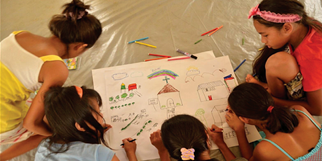
First legislation in Asia to protect children in emergencies
Landmark legislation to protect fundamental rights of children affected by disasters and other emergencies was approved by the Philippine Congress on 2 February. The bill, the Children's Emergency Relief and Protection Act, mandates the Government to establish a comprehensive emergency programme to enhance the provision of life-saving humanitarian and protection assistance to children, ensure their access to education and civil documentation, and train emergency responders on child protection. Save the Children, UNICEF and other international and local aid agencies supported the concerned lawmakers and government agencies in the drafting and advocacy of the bill, which drew upon lessons of the responses to Typhoon Haiyan and other past disasters that affected the Philippines.

